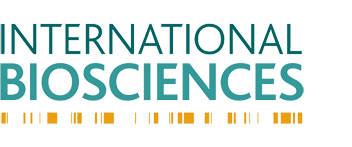Related Terms for Ancestry and Genealogy
A
Admixture: The action of mixing, the fact of being mixed, something added by mixing or a product of mixing.
Allele: Alternate sequences for a particular position in the genome. For example, a common variation in the genome is for some forms of the sequence to have Cytosine (C) while other forms have Thymidine (T). Thus, since we have two copies of each chromosome, there are three genotypes at this position CC, CT, and TT.
Ancestry: Line of descent.
Ancestry Informative Marker (AIM): AIMs are the subset of genetic markers that are different in allele frequencies across the populations of the world. Most polymorphism is shared among all populations and for most loci the most common allele is the same in each population.
Antecedent: A preceding event, condition, or cause. The conditional element in a proposition. Used herein to denote individuals that came before.
Anthropology: The science of human beings; especially : the study of human beings in relation to distribution, origin, classification, and relationship of races, physical character, environmental and social relations, and culture.
B
Biogeography: A science that deals with the geographical distribution of animals and plants.
C
Chromosome: The physical units of heredity: long linear strands of DNA. Humans have 22 autosomal chromosome pairs, plus two sex chromosomes, X and Y. Men have two copies of each autosome, 1, 2, …, 22, X, Y. Women have two copies of each chromosome 1, 2, 3, …, 22, X, X. Each person thus has a total of 46 chromosomes.
D
Demography: The statistical study of human populations especially with reference to size and density, distribution, and vital statistics.
DNA: Deoxyribonucleic Acid. Genetic information is encoded and transmitted from generation to generation in it. It is a coiled molecule organized into structures called chromosomes cells. Segments along the length of a DNA molecule form genes, the molecular laborers that carry out all life-supporting activities in the cell. Although all humans share the same set of genes, individuals can inherit different forms of a given gene, making each person genetically unique.
E
Ethnic: Of or relating to large groups of people classed according to common racial, national, tribal, religious, linguistic, or cultural origin or background.
Exagomous: Marriage outside of a specific group especially as required by custom or law. Meant herein to refer to admixture from outside of a group.
Endagomous: Marriage inside of a specific group especially as required by custom or law. Meant herein to refer to admixture from inside a group.
G
Genealogy: An account of the descent of a person, family, or group from an ancestor or from older forms. The study of family pedigrees.
Genetics: the study of the function and behavior of genes. Genes are bits of biochemical instructions found inside the cells of every organism from bacteria to humans. Genes direct the synthesis of proteins.
Genome: All of the genetic material in a species. The human genome is approximately 3,300,000,000 base pairs in length.
Genomics: The study of the complete compliment of genetic material in a species.
H
Heterogeneous: Consisting of dissimilar or diverse ingredients or constituents.
Homogeneous: Of uniform structure or composition throughout.
Hypothesis: A tentative assumption made in order to draw out and test its logical or empirical consequences.
L
Locus (pl. loci): The name for a physical position on the genome. Can either refer to a large region such as a complete gene or a very specific region, like a particular base pair position.
M
MALD: A mathematical algorithm that is used to determine population structure called Mapping by Admixture Linkage Disequilibrium and when used collectively with proprietary genomic maps and other algorithms it is called ADMIXMAP.
P
Pedigree: A register recording a line of ancestors.
Pharmacogenomics: Pharmacogenomics is the testing of individuals to predict their genetic pre-disposition to drug response. The field of study looks at how genetic variations among the population affect drug response. It involves the analysis of genomic data to develop a screening process for more efficient clinical trials and molecular diagnostic tests used to determine individualized drug responses. It also looks at how a new targeted drug therapy could be developed using genomic data and analysis.
Polarized: To break up into opposing factions or groupings. Used herein to refer to BioGeographical Ancestry admixture results such as 95% East Asian/5% Native American as opposed to a relatively even mix such as 50%/50%.
Polymorphism: The property of having more than one state or alternate sequence at a particular position. The alternate states are called alleles.
Population genetics: The study of the genetics of groups of individual organisms.
S
Single Nucleotide Polymorphism (SNP; pronounced snip): A precise base pair position where different people are found to vary in sequence. Generally two alternate alleles are found at a particular SNP. At least 2,000,000 SNPs are now known and there may be over 30,000,000 in the human genome.

